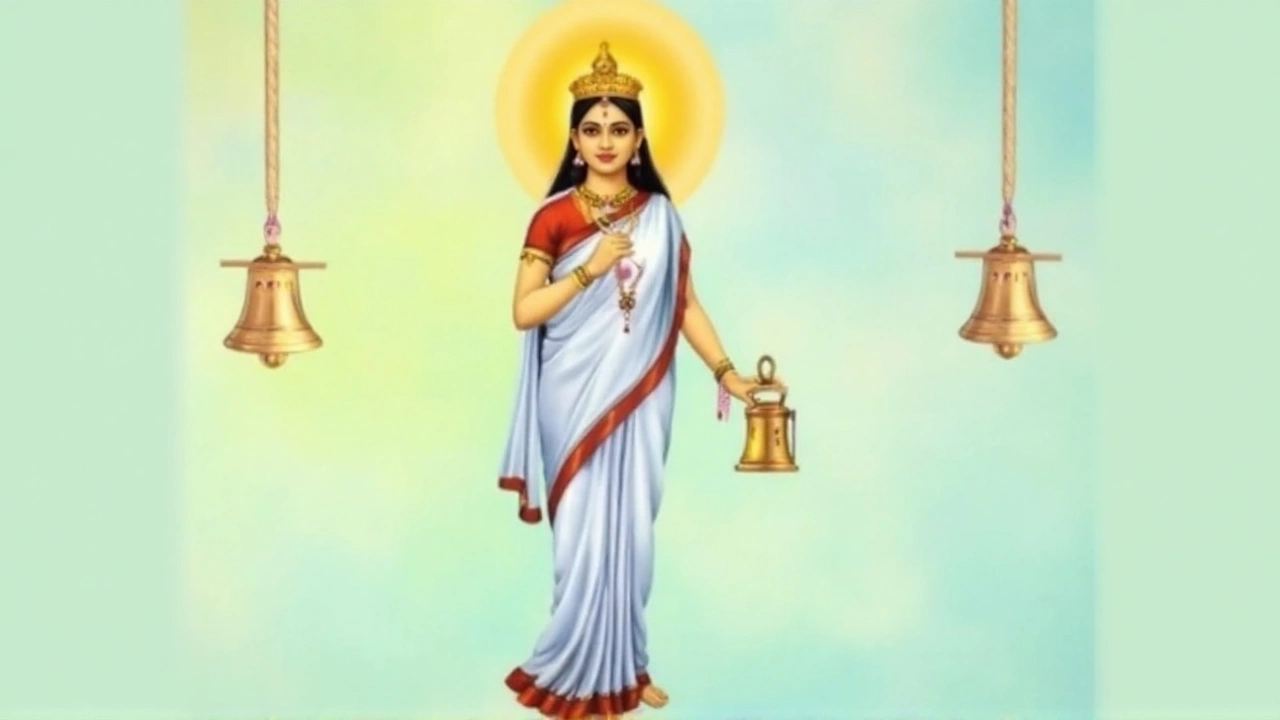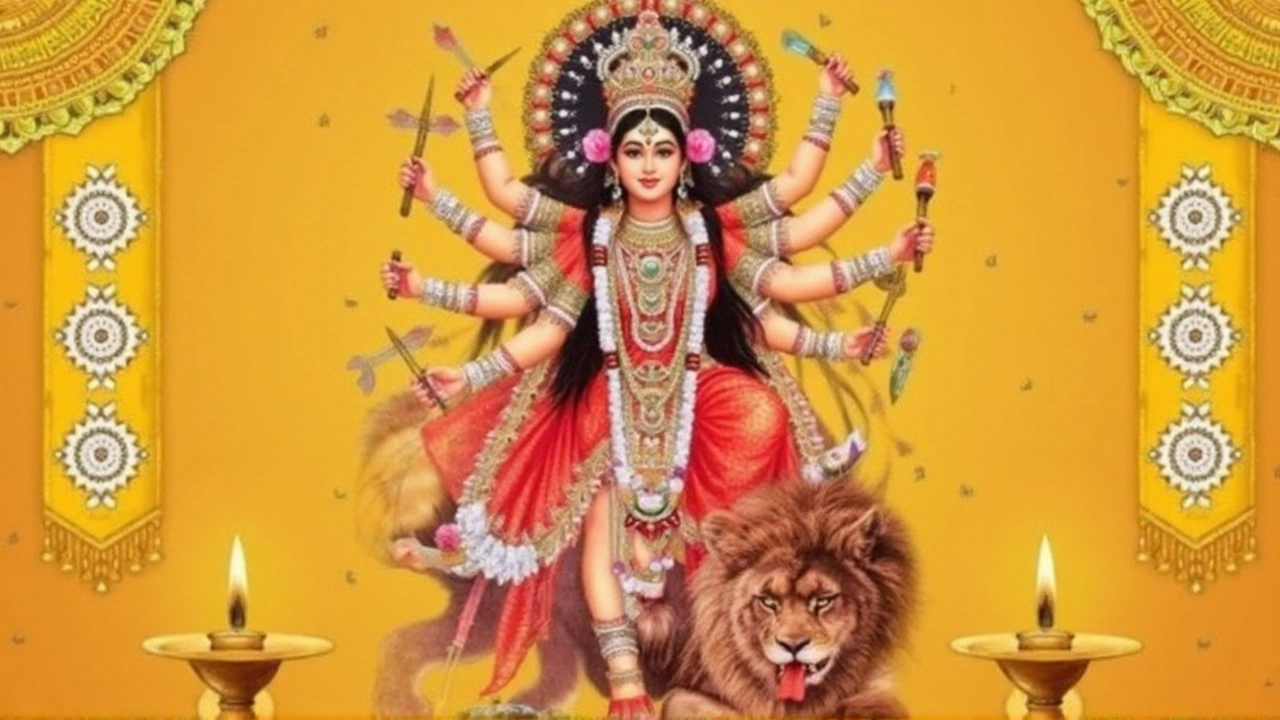Navratri Day 2 2025: How to Worship Maa Brahmacharini with Red Auspiciousness, Mantras and Puja Steps
 Sep, 23 2025
Sep, 23 2025
Understanding Maa Brahmacharini and Her Symbolism
On the second day of Navratri 2025, devotees turn their focus to the goddess who embodies extreme penance and steadfast devotion. Known as Brahmacharini, she is the form Parvati assumes when she abandons worldly comforts to win Lord Shiva’s heart. The term itself translates to "one who walks the path of celibacy and austerity" – a reminder that spiritual progress often demands sacrifice.
Iconographically, Brahmacharini is depicted barefoot, clutching a rosary (mala) in her right hand and a water pot (kamandalu) in her left. The rosary signals continuous prayer, while the pot represents purity and the sustenance drawn from divine sources. Her serene face, usually set against a backdrop of mountains or forests, tells the story of a goddess who survived on leaves, then on sheer will, earning the name Aparna (the leaf‑less).
Beyond mythology, Brahmacharini’s narrative offers a template for modern life. Whether you are tackling a demanding project, studying for exams, or simply seeking inner calm, her example encourages perseverance, focus, and a return to basic values.

How to Perform Navratri Day 2 Worship
Rituals on Day 2 blend age‑old tradition with today’s practicalities. Below is a step‑by‑step guide that expands on the core elements, ensuring you capture both the spirit and the specifics of the celebration.
Auspicious Color – Red
- Red symbolizes energy, courage, and the fiery determination of the goddess. Wearing a red kurta, saree, or even a simple red scarf helps channel this vigor.
- Home décor can echo the hue: red rangoli patterns at the entrance, red torans (door hangings), and red vermilion (kumkum) applied on the puja altar.
Morning Preparations
- Begin with a full body cleanse. A bath with herbal soaps or a simple lukewarm soak signals purity.
- Choose an auspicious time (muhurat) for Kalash Sthapana—commonly the early hours after sunrise when the sun’s rays are gentle.
- Light an Akhand Jyoti (continuous ghee lamp) that will burn for the full nine days of Navratri. This lamp is a visual promise of unwavering devotion.
Kalash Sthapana – The Sacred Pot Setup
- Take a shallow clay pan and press three layers of moist mud, forming a firm base.
- Sow Sapta Dhanya (seven grains) – barley, wheat, rice, millet, gram, bean, and sesame – spreading them evenly.
- Sprinkle a little water to help the seeds germinate, symbolizing growth and new beginnings.
- Prepare the Kalash: fill it with fresh Ganga water, add a few betel nuts, coins, a handful of Akshat (turmeric‑mixed rice), and a tuft of Durva grass.
- Draw a Swastik on the pot’s rim using red kumkum; this invokes prosperity and protection.
- Adorn the Kalash neck with five mango leaves, place a coconut wrapped in a red cloth on top, and tie a sacred red thread around the neck.
- Gently place the fully prepared Kalash at the centre of the mud‑pan, completing the sanctified space.
Daily Puja Routine
- Light a fresh diya (oil lamp) before the deity’s image or idol.
- Offer red hibiscus (Jasminum) flowers—each blossom represents love and devotion.
- Present a red chunri or piece of cloth, symbolising purity and the devotee’s surrender.
- Distribute sweets such as laddoo or peda as prasad; sharing food spreads the goddess’s blessings.
- Recite the Brahmacharini mantra: “Om Aim Brahmacharinyai Namah” – repeat it 108 times using a rosary for counting.
- Conclude the session with an Aarti, moving the camphor‑lit plate in a clockwise direction while singing traditional verses.
Mantra Benefits and Spiritual Impact
Continuous chanting aligns your breath with the divine frequency, fostering mental clarity and emotional steadiness. Practitioners report heightened focus in work or study, reduced anxiety, and a felt sense of protection against negative influences.
Modern Ways to Celebrate
While the core rituals remain unchanged, technology adds a new layer of connectivity. Devotees upload short Navratri Day 2 status videos, share devotional playlists, and post curated images of their red‑themed puja corners on platforms like Instagram and WhatsApp. This digital sharing amplifies community spirit, especially for those living away from traditional family circles.
Many also join live-streamed puja sessions hosted by temples, allowing participation from anywhere in the world. Interactive chat rooms let participants exchange wishes, discuss mantra pronunciations, and even coordinate collective donations to charitable causes.
Anticipated Blessings
- Enhanced inner strength to face challenges.
- Clarity of thought for making important decisions.
- Persistence in long‑term goals, whether personal or professional.
- Protection from negative thoughts and energies.
- Peaceful sleep and mental tranquility.
By integrating these timeless practices with today’s means of communication, the worship of Brahmacharini on the second day of Navratri becomes both a personal pilgrimage and a shared cultural experience.